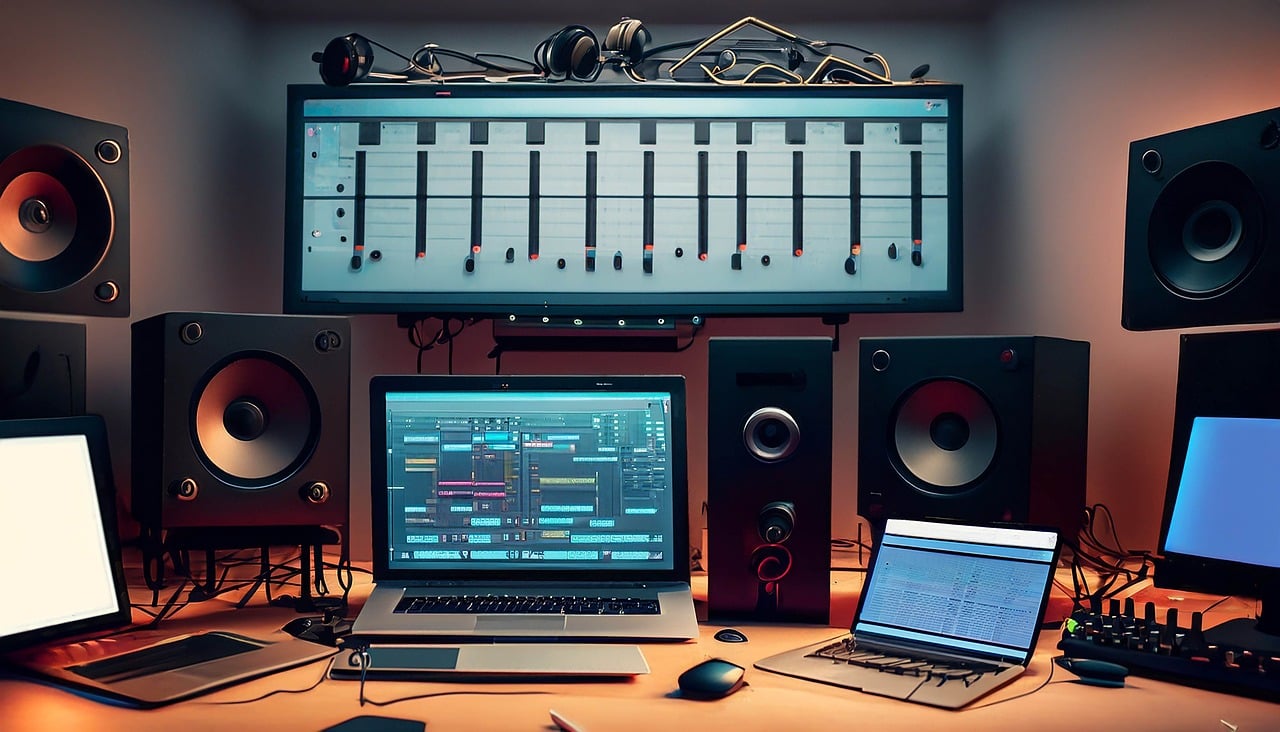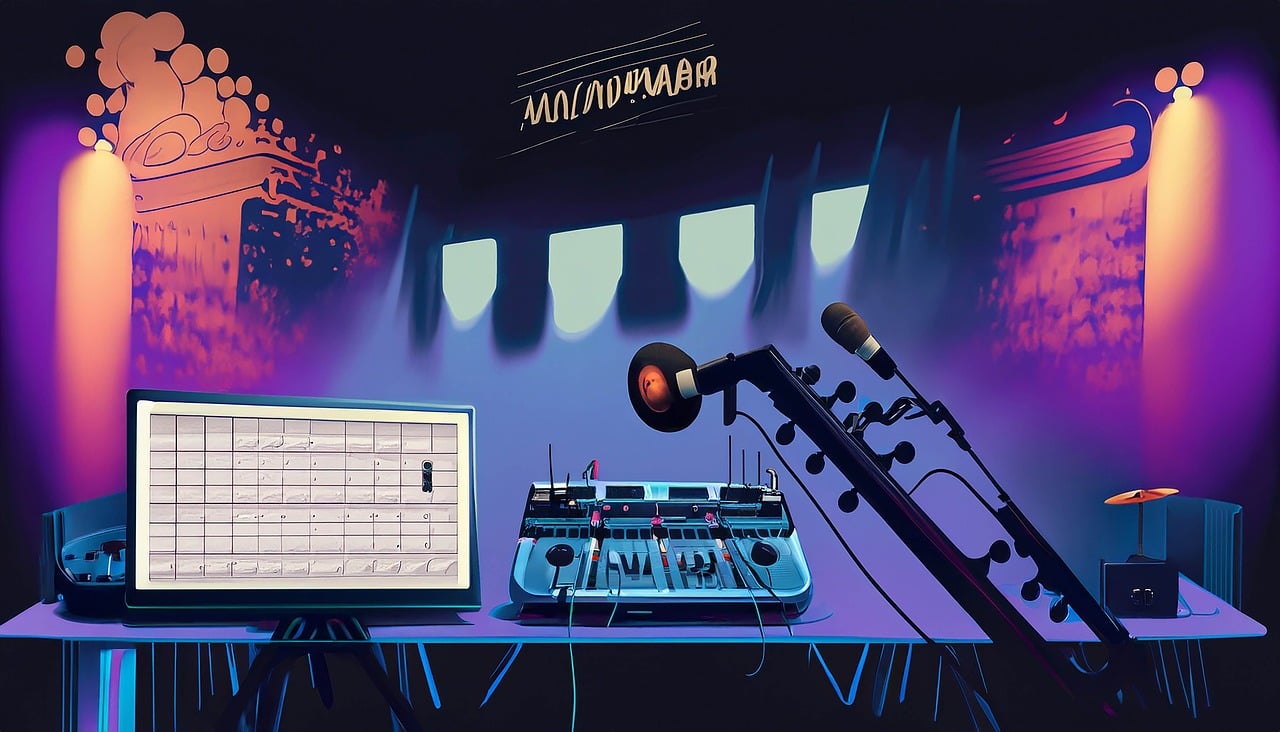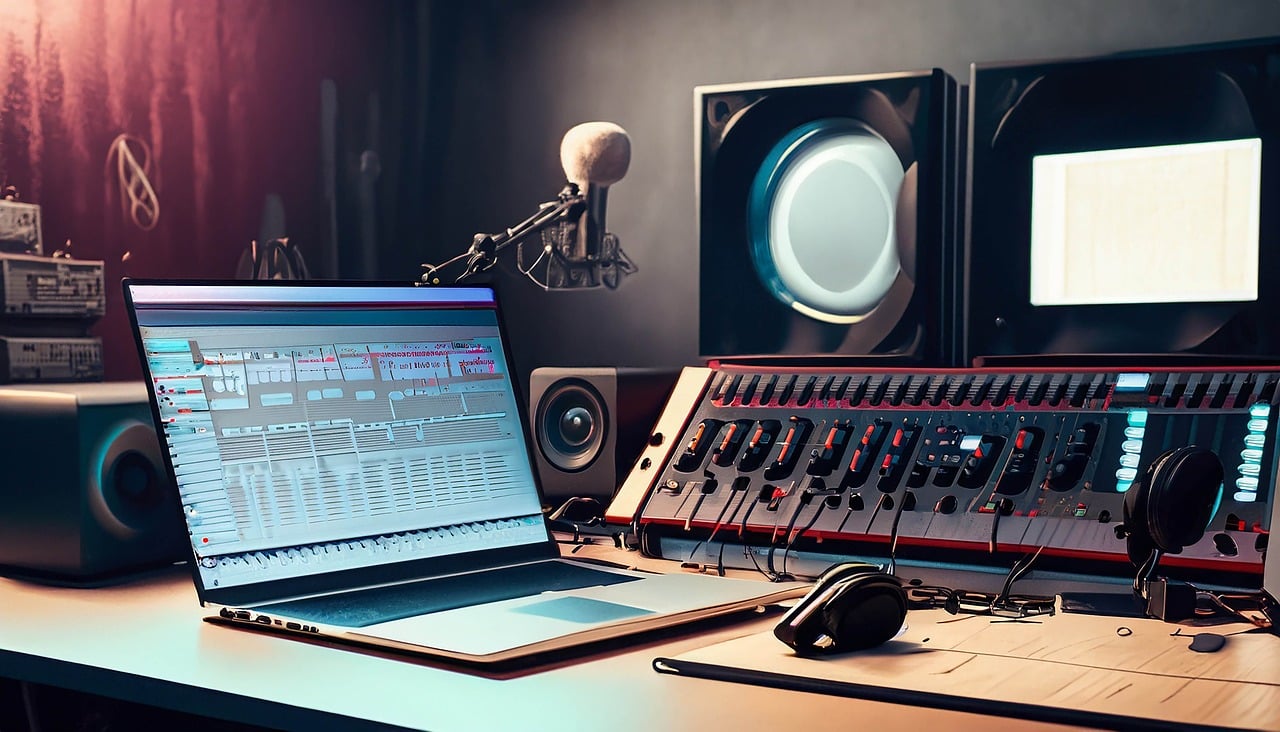Introduction to Creative Commons Music
Creative Commons (CC) music represents a revolutionary approach to copyright and intellectual property in the digital age. It’s a form of music licensing that allows creators to share their work with the public while still retaining certain rights. Unlike traditional copyright, where all rights are reserved by default, Creative Commons licenses allow artists to specify how others can use their work, ranging from allowing any type of use as long as the artist is credited, to permitting only non-commercial uses.
This shift is significant in a world increasingly driven by digital content and online sharing. Creative Commons licenses provide a flexible range of protections and freedoms for authors and artists, empowering them to choose how their work is used and shared. This flexibility not only benefits the creators but also enriches the public domain, fostering a culture of collaboration and innovation.
As we delve deeper into the world of Creative Commons music, we’ll explore the different types of licenses, their implications for artists and users, and how this model has influenced the music industry. We’ll also look at real-world examples of how Creative Commons music has been successfully utilized and the platforms where you can discover such music.
Understanding Creative Commons Licenses
Creative Commons licenses are integral to understanding the landscape of CC music. These licenses are legal tools that enable creators to offer some of their copyright rights to the public, while retaining others. There are several types of Creative Commons licenses, each with its unique set of permissions and restrictions.
- CC BY (Attribution): This is the most permissive of the CC licenses. It allows others to distribute, remix, adapt, and build upon the work, even commercially, as long as they credit the original creator. This license is popular among creators who wish to maximize the distribution of their work.
- CC BY-SA (Attribution-ShareAlike): This license allows others to remix, tweak, and build upon the work even for commercial purposes, as long as they credit the creator and license their new creations under the identical terms. This license is often compared to open source software licenses.
- CC BY-ND (Attribution-NoDerivs): This license allows for redistribution, commercial and non-commercial, as long as the work is passed along unchanged and in whole, with credit to the creator. It’s suitable for those who do not want their work altered in any way.
- CC BY-NC (Attribution-NonCommercial): This license lets others remix, tweak, and build upon the work non-commercially, and although their new works must also acknowledge the creator and be non-commercial, they don’t have to license their derivative works on the same terms.
- CC BY-NC-SA (Attribution-NonCommercial-ShareAlike): This license lets others remix, tweak, and build upon the work non-commercially, as long as they credit the creator and license their new creations under the identical terms.
- CC BY-NC-ND (Attribution-NonCommercial-NoDerivs): This is the most restrictive of the six licenses, only allowing others to download the works and share them with others as long as they credit the creator, but they can’t change them in any way or use them commercially.
Understanding these licenses is crucial for both creators and consumers. For artists, choosing the right type of CC license can mean a balance between retaining certain rights and allowing their work to be freely and widely distributed. For users, knowing these licenses ensures respectful and legal use of CC music. Websites like the official Creative Commons site offer detailed explanations and examples of each license, helping both creators and users navigate this landscape.

History of Creative Commons in Music
The history of Creative Commons in music traces back to the early 2000s, rooted in the broader movement towards open access and sharing of digital content. Creative Commons itself was founded in 2001 by Lawrence Lessig, Hal Abelson, and Eric Eldred, motivated by the desire to counter the increasingly restrictive copyright laws. The aim was to facilitate the sharing and use of creative works, including music, to foster a more collaborative and accessible cultural landscape.
In the music industry, this concept found fertile ground. The advent of the internet and digital technologies had already begun transforming how music was produced, distributed, and consumed. Artists started to realize the limitations of traditional copyright in a digital era characterized by easy duplication and sharing of content. Creative Commons offered a new way forward, enabling artists to share their work more freely while still maintaining control over how it was used.
One of the early adopters of Creative Commons in music was the Brazilian musician Gilberto Gil, who also served as the country’s Minister of Culture. He advocated for the use of CC licenses in Brazilian music, recognizing their potential to democratize access to culture and promote artistic innovation.
In the United States and Europe, numerous independent artists and labels began to experiment with CC licenses. Netlabels, which distributed music exclusively online, became prominent proponents of Creative Commons, using the licenses to legally share their music for free while fostering a community of artists and fans.
The impact of Creative Commons in the music industry is a tale of transformation and adaptation. It represents a shift from a model of strict control over artistic works to one that values openness, collaboration, and shared culture. In the next section, we’ll delve into the benefits that Creative Commons brings to both artists and consumers.
Benefits of Creative Commons for Artists and Consumers
Creative Commons licenses offer significant benefits to both artists and consumers, shaping a more inclusive and dynamic music industry.
For Artists:
- Wider Distribution: Creative Commons licenses facilitate broader distribution of music. By allowing their work to be freely shared, artists can reach a larger audience than they might through traditional channels. This increased exposure can be particularly beneficial for emerging artists looking to build a fanbase and gain recognition.
- Creative Control: While offering their music for wider use, artists can still retain a level of control. Depending on the type of CC license chosen, they can set terms regarding how their work is used, such as requiring attribution or limiting commercial use.
- Community Engagement: CC licenses encourage a sense of community and collaboration. Artists often find themselves part of a network of creators and fans who value open access to cultural content. This can lead to collaborative projects and a supportive artist-fan relationship.
- Innovative Opportunities: By allowing others to remix or adapt their work, artists open the door to innovative reinterpretations and collaborations, which can lead to new creative opportunities and exposure to different audiences.
For Consumers:
- Access to Diverse Music: Consumers benefit from the wide range of music available under Creative Commons licenses. This access to diverse musical works fosters cultural exchange and appreciation.
- Legal Sharing and Use: CC licenses provide a clear and legal framework for sharing, remixing, and enjoying music. Consumers can use CC-licensed music without fear of copyright infringement, as long as they adhere to the terms set by the artist.
- Participation in Music Creation: Some CC licenses allow consumers to actively participate in the creative process, such as by remixing tracks. This can lead to a more engaged and participatory culture around music.
The adoption of Creative Commons licenses in the music industry reflects a growing trend towards openness and shared cultural experiences. In the next section, we’ll explore real-world examples of successful Creative Commons music projects, highlighting their impact on artists and audiences.
Case Studies: Successful Creative Commons Music Projects
Creative Commons licenses have enabled a variety of successful music projects, showcasing the model’s potential for innovation and wide-reaching impact. Here are a few notable examples:
- Nine Inch Nails’ “Ghosts I-IV”: In 2008, Trent Reznor released this instrumental album under a Creative Commons license, allowing fans to freely share and remix the music. The album was a commercial success, demonstrating how CC licenses could be used effectively by established artists.
- Amanda Palmer’s “Theater is Evil”: Singer-songwriter Amanda Palmer released her album under a CC license, raising over a million dollars through a Kickstarter campaign. Her approach highlighted how artists could leverage the power of their community to fund and distribute their work under CC terms.
- Moby’s “MobyGratis”: This platform offers a library of Moby’s music for free use in independent films, documentaries, and non-profit projects. It’s a unique example of how artists can use Creative Commons to support other creative endeavors while gaining exposure.
- Jamendo Music: As a platform dedicated to promoting CC music, Jamendo has become a hub for both artists and consumers. It offers a vast library of free music while providing artists with a space to share their work with a global audience.
These case studies demonstrate the versatility of Creative Commons in the music industry. From individual artists to online platforms, the use of CC licenses varies, but the underlying principle remains the same: fostering a culture of sharing and collaboration.

How to Find and Use Creative Commons Music
Finding and using Creative Commons music is a straightforward process, thanks to various online platforms and resources dedicated to CC-licensed works. Here’s a guide on where to find CC music and how to use it correctly:
- Platforms for Finding CC Music:
- Free Music Archive (FMA): A well-known platform offering a vast selection of CC music across different genres.
- Jamendo Music: As mentioned earlier, Jamendo is a treasure trove for CC music, ideal for discovering new artists and tracks.
- ccMixter: This community music site is where you can find music to remix and use in your own projects, fostering collaboration between artists and creators.
- Using CC Music Responsibly:
- Understand the License: Before using any CC-licensed music, it’s crucial to understand the specific terms of the license. This includes whether the track can be used commercially, if it needs to be attributed, and if modifications are allowed.
- Provide Proper Attribution: If the license requires attribution, ensure you credit the artist, the title of the piece, and include a link to the license. This acknowledgment respects the artist’s work and maintains the spirit of Creative Commons.
- Adhere to License Restrictions: If the license prohibits commercial use or modifications, you must respect these terms. Using the music in a way not permitted by the license can lead to legal consequences.
These guidelines ensure that both creators and users respect and uphold the values of Creative Commons, fostering an environment where music can be freely shared and enjoyed.
Challenges and Criticisms of Creative Commons in Music
Despite its benefits, Creative Commons faces challenges and criticisms in the music industry. One significant concern is the potential for misunderstanding or misuse of licenses, leading to conflicts between creators and users. Additionally, some artists fear that CC licenses may undermine the value of their work by facilitating free distribution, potentially impacting their revenue. There’s also a debate over the effectiveness of CC licenses in protecting artists’ rights, especially in an era of rapid digital proliferation. These challenges highlight the need for clear communication and education about CC licenses to ensure they are used effectively and respectfully.
Conclusion
Creative Commons music represents a paradigm shift in the way we create, share, and experience music. It fosters a culture of collaboration and innovation, breaking down traditional barriers in the music industry. While there are challenges and criticisms, the benefits of CC licenses — wider distribution, community engagement, and enhanced creative opportunities — are significant. As we move forward, Creative Commons music is likely to continue influencing the industry, encouraging a more open and interconnected musical world. It’s an exciting time for artists and audiences alike, as we navigate this evolving landscape of shared cultural experiences.
